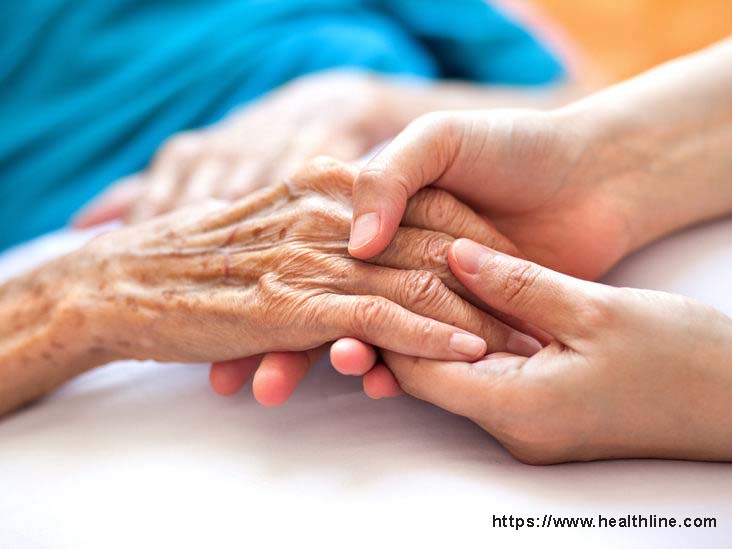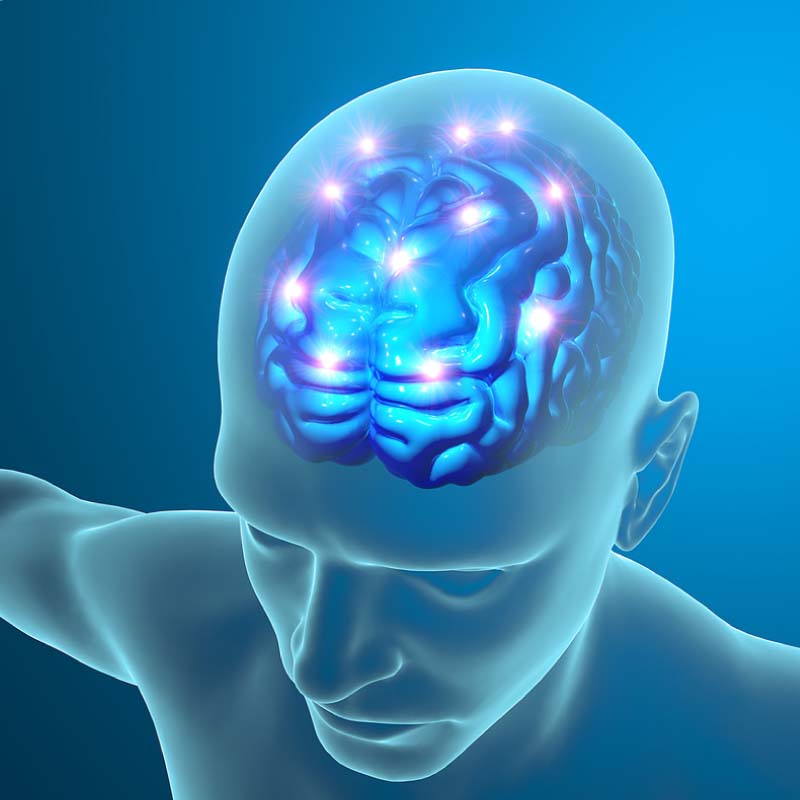Alzheimer’s disease affects 5 percent of the population aged 65 to 74 years, and 30 percent of people above 85 years. Half of the people in nursing homes in the United States have Alzheimer’s disease.
Dementia is a term used to describe the loss of intellectual and social skills serious enough to interfere with daily living. There are several causes of dementia, but the most common one (found in 50 percent to 60 percent of cases) is Alzheimer’s disease.
In patients with Alzheimer’s disease, the brain cells get damaged and die. The normal interconnections between the nerve cells of the brain are destroyed, similar to a computer with faulty wiring. This scenario causes a progressive loss of memory and thinking ability. At present, there is no cure, but doctors can help delay the onset of the symptoms.
What causes Alzheimer’s disease? We are still not sure but experts theorize that it’s a combination of hereditary factors (genes), poor lifestyle habits (overeating) and possibly environmental factors that can affect the brain. In less than five percent of cases, there is a specific genetic culprit for the disease.
Symptoms
Increasing forgetfulness. The patient has difficulty remembering names or where they left their things. In the Philippines, we often say “nag-u-ulyanin na.” While everyone has some lapses, the memory loss in Alzheimer’s disease is more severe. A common first sign is the loss of short-term memory (what they just did a few minutes ago.) In later stages, patients may eventually forget the names of their close relatives.
Loss of orientation. People with Alzheimer’s disease cannot state what year, month or day it is. They may not know the president of the country. They may get lost easily.
Changes in behavior. You often find the patient wandering around, getting agitated and yelling at other people. Struggles to perform daily activities. Simple activities like playing a board game, cooking and planning the day’s work are difficult for the patient.
Harder to talk and write. Patients have difficulty communicating with other people and identifying common objects. Poor in calculation and reasoning. One of the tests to detect Alzheimer’s disease is to ask the person to count from 100 backwards by decrements of seven. For example, 100, 93, 86, 79, 72 and so forth.
Poor judgment. If you ask the patient to decide what to do in case of fire, they might say something totally irrelevant to the situation. Because of these changes, patients with Alzheimer’s disease are more prone to complications, like developing pneumonia and falling.
Risk factors
• Older age group.
• Family history. The risk of getting the disease is higher if somebody in the family has the disease.
• More women have Alzheimer’s disease, but this may partly be because women live longer than men.
• Other risk factors are similar to those causing heart disease: smoking, high blood pressure, high cholesterol, diabetes and lack of exercise. When the blood vessels of the brain are partly occluded, then the chances of getting dementia increases.
A difficult diagnosis
Although Alzheimer’s disease is so common, it is not easy to make the diagnosis. Your neurologist will determine if the patient has the disease based on a mental status test (asking the patient questions), a neurologic exam and certain laboratory tests.
Brain imaging (CT Scan, MRI Scan or PET Scan) can also help exclude other brain disorders, such as a stroke or brain tumor. Based on these tests, the doctor can accurately identify Alzheimer’s disease in 90 percent of cases. Definitive diagnosis can only be made after death, when a microscopic examination of the brain shows the characteristic plaques and tangles.

Patient care
The neurologist may prescribe drugs that can help reduce memory loss and other cognitive changes. The first line drugs are called cholinesterase inhibitors, such as Donepezil (brand name Aricept). These drugs work by increasing the neurotransmitters in the brain. Donezepil is given at the usual dose of 5 mg once a day for four to six weeks.
However, this drug only works in half of the cases. If the patient does not improve or has side effects like nausea or vomiting, then the drug is discontinued. A second drug called memantine may also be tried. Alzheimer’s disease is a challenge to treat and you need to work with your neurologist closely.
Aside from medicine, the family plays a crucial role in the health and safety of the patient. First, we should create a safe environment by installing handrails in the bathroom and other areas in the house. Make sure the doors are locked at night. Watch out for slippery surfaces and obstructive furniture in the house. Have the patient wear comfortable clothes and rubberized shoes and slippers. In addition, regular exercise and good nutrition are essential to the patient’s sense of well being. Patients with poor appetites may require supplemental feedings high in calorie and protein.
Prevention tips for everyone
- Be a lifelong learner. Keep on studying. Research shows that people with a higher level of formal education have a lower incidence of Alzheimer’s disease.
- Find an exciting and stimulating job.
- Continue doing mentally challenging activities like playing chess or solving crossword puzzles and Sudoku. Reading and playing musical instruments also help keep the brain active. Experts believe these activities stimulate the brain to increase its cell to cell interaction and connections, thereby protecting you from Alzheimer’s disease.
- Have many friends. Enjoy the friendship of people older and younger than you, since they broaden your perspective.
- You can’t go wrong with a healthy lifestyle of regular exercise, a low fat diet, and a diet high in fruits and vegetables.
- Some studies show that taking Vitamin B complex tablets may help reduce brain shrinkage and prevent Alzheimer’s disease.
- Preliminary studies show that fishes rich in Omega 3 fatty acids, like sardines, salmon and mackerel, may help protect the brain.
- At present, there are unclear results with the use of Statins, Vitamin E and Ginkgo biloba for Alzheimer’s disease.
- Finally, the best prevention tip is to treat other medical conditions like high blood pressure, heart disease and diabetes. If you treat these conditions, then you prevent Alzheimer’s disease as well. — First published in Tulay Fortnightly, Chinese-Filipino Digest 29, no. 3 (July 5-18, 2016): 15.
